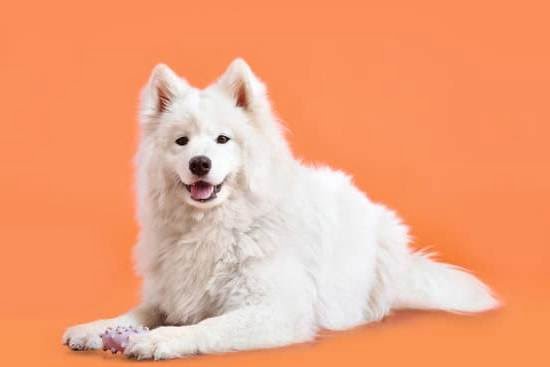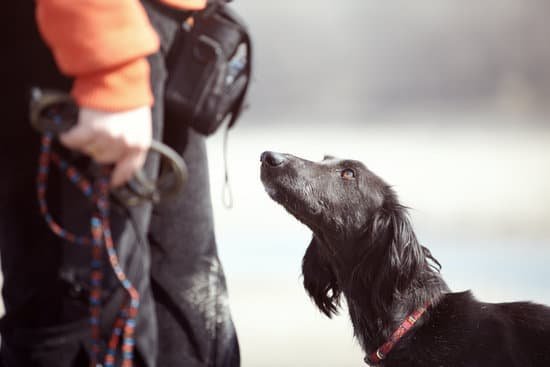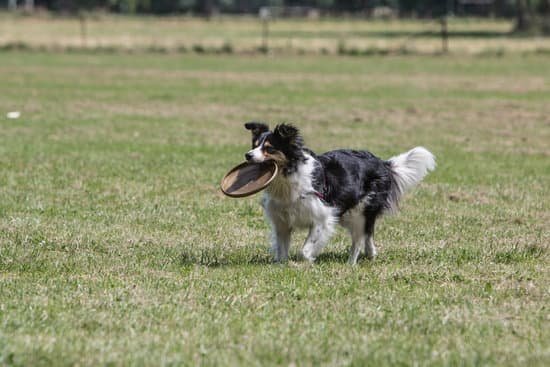Introduction
If you have a potty trained dog that is now having inexplicable accidents, you are probably bewildered and frustrated. While the reasons why this has suddenly occurred may seem mysterious, there is usually an underlying cause that can be uncovered. In order to get to the bottom of what is causing your pet’s new accidents, it’s important to take a step back and evaluate a few things about your pup and his behavior. By doing this, you should be able to pinpoint possible causes for the recent lapses in potty training.
Going Back to the Basics
If you’ve recently noticed that your dog that was once potty-trained has begun to have accidents inside the house again, it may be time to start the potty-training ritual from the beginning. It is sometimes necessary to take a step back and go back to basics when it comes to potty training. While this can seem tedious, there are actually several benefits to restarting potty training with an older dog.
First, restarting a potty-training routine allows you to closely monitor your pet’s progress or lack thereof. If you’ve noticed your pup having accidents at particular times of the day or in specific areas of the house, learning those patterns will help guide successful potty training in the future. You can also begin working on positive reinforcement techniques like praising your pup for going outside and providing treats for good behavior. This will not only make progress easier but also create a better bond between you and your pup.
Second, restarting potty-training promotes consistency and routine which is important for dogs of all ages. Routine can be extremely helpful as it allows dogs to more easily remember what they are supposed to be doing when they need to go out to relieve themselves. Finally, starting with the basics can provide insight into any medical issues that might have developed since your pet was last trained by identifying if excessive accidents coincide with changes in diet or new medications.
Restarting potty-training may not always be necessary but can be a beneficial part of establishing proper canine behavior when needed.
Reducing Stress and Anxiety
Two common issues with crate training are fear and anxiety. If your dog is potty trained but now having accidents, it is likely due to stress or fear triggers associated with being confined in the crate. To address these triggers, start by changing your approach to your dog’s training schedule. Make sure you are not confining them for excessively long amounts of time and that their environment is comfortable and stress-free. This can include providing a soft blanket, toys, treats, and access to water. Additionally, consider adjusting the location of the crate in order to be near their owners or windows where they can observe activities occurring outside the house. You should also try to keep the environment routine and consistent so that your pup knows what’s expected of them when entering or exiting the crate. Finally, if your pup starts exhibiting signs of distress such as barking excessively or scratching at the walls within their kennel, take this as a sign that further steps must be taken to reduce their fear levels. Call upon a professional trainer who will be able to help you create an effective plan for calming an anxious pet.
Setting the Scene
When potty training your dog, it is important to create an attractive, inviting environment. This helps them to understand where they can do their business without needing reminders or corrections from you. Depending on the size of your backyard and preference, there are a variety of set-ups for potty training that work.
For larger yards and spaces, setting up two designated areas for pottying: one near the exit door of the house to remind dogs when it’s time to go out, and another toward the back of the yard where they’ll be comfortable doing their business without interruption. If space permits, those areas should feature natural surfaces like grass or mulch—these materials might be more comfortable for dogs than hard surfaces like concrete or stone. Alternatively, if you have artificial grass covering your yard, this may serve as an attractive option for potty training purposes.
Finally, as a way to reward successes during potty training and create an even more inviting environment, you can use specific toys or treats designed specifically for pup-poo time. This will provide further reinforcement outside of praise and petting that let your dog know he will receive rewards if he does his “business” in the appropriate place.
Checking Your Progress
If your dog is potty trained but now having accidents, the best thing to do is take a step back and reassess how you’ve been managing their potty training. First, review what has been working for you and why it was working. Then check in on your training methods and identify any areas that may need updating or reinforcement.
Are you taking your dog out often enough? Depending on their age, approximately every hour or so they will need to go out. Have you been consistent with when they go out after eating, napping, or playing? If not, this could lead to an accident as they may not have time to hold it until the planned designated bathroom time.
Perhaps there are other factors at play like diet changes or medical issues that could contribute to their accidents? If these have changed recently, consider switching back the diet or consulting with your veterinarian about any necessary vet care and remedies.
It may also be helpful to monitor your dog’s behavior throughout the day in order to identify any potential triggers that can lead to an accident. By understanding what state of mind leads them towards toileting inappropriately, you can practice prevention strategies such as redirecting attention away from those triggers with obedience commands or new games/activities.
Rewarding Good Behavior
Dog potty training can be a trying experience, as accidents are all too common and seemingly unavoidable. If your pup is already potty trained and you’re seeing a recent regression in their progress, the good news is that it’s still possible to get them back on track. According to leading dog behavior experts, positive reinforcement is the most effective way of re-introducing desired behaviors and discouraging unwanted ones. Here are some tips for getting your pup back on track with a successful potty training program:
1. Timing! Rewards for being successful should be given as soon as possible after a positive action has taken place. This will give your pup the best chance of connecting the reward with their actions and associating this behavior with something positive and desirable.
2. Consistency! A consistent routine should always be followed when leash walking outside or supervising indoor bathroom sessions. Positive reinforcement should happen in exactly the same manner every single time your pup goes in the right spot, whether indoors or out, so they recognize that responding to verbal cues will result in rewards each and every time.
3. Variety! Mix it up by offering different types of rewards for desired outcomes, including praise words and physical treats like small toys or food snacks that your pup enjoys; this will help keep them engaged and increase motivation levels to complete tasks correctly.
4. Patience! Mistakes are inevitable, but it’s important not to become frustrated or angry if things don’t go perfectly during training sessions; stay calm, take a few deep breaths, then try again – making sure you provide support and encouragement along the way until success is achieved!
Seeking Professional Help
There are times when a pet parent will recognize that their beloved dog has stopped being potty trained and started having accidents in the home. After ensuring that there are no medical issues at play, it is often necessary to seek professional help. Working with a dog trainer and/or behaviorist can be incredibly helpful in solving this issue. When dealing with potty trained dogs having accidents, professional help often involves breaking the problem down into manageable steps. Training usually begins by looking at the environment of the home or yard as well as any changes in diet, exercise, or behavior patterns in the dog’s life. Professionals then review how to effectively communicate desired behaviors to the dog and how to reward them for those behaviors when they are successful. Additionally, there may be concepts such as establishing restricted areas within the house for any accidents or learning about faster methods for cleanup. Professional trainers and behaviorists also have experience addressing potential conflicts between multiple animals in multi-pet households as well as finding solutions to address underlying causes of problem urination behaviours. Finally, a qualified individual can also identify any deeper emotional trauma issues and work on healing these separations which in turn can improve overall quality of life for both pet parents and pets alike.
Taking Action
If your dog has been potty trained but is now having accidents, you should take it as an opportunity to evaluate and troubleshoot the possible causes. Accidents can occur for a variety of reasons such as a medical issue or nervousness due to changes in their environment.
The first step is to talk with your veterinarian to rule out any underlying health issues. If a health-related issue is ruled out, there are many potential things that could be causing your pet’s behavior. It may be that their environment has changed and they are feeling overwhelmed or anxious by their new surroundings. In this case, it is important to give them extra attention and reassurance so that they feel comfortable and secure. Additionally, it may help to establish clear rules for your pet about where they should do their business – such as assigning one particular spot and reward them when they go in the right location.
It’s also important to avoid punishing your pet as this can only make the problem worse by damaging their self-confidence, making them more uncomfortable around people and even increasing potty accidents. The key is to look at each situation on an individual basis and determine which strategy would work best for your pup – whether it’s providing extra care and attention, positive reinforcement or making small environmental tweaks like using baby gates or blocking off particular areas of the house, depending on what works best for you both. With patience on your part, you will be able to help get rid of these accidents soon!
Conclusion
If your dog is potty trained but has recently started having accidents, then it is important to understand that there are potential reasons for this behavior and solutions that you can use to address it. The first step in building a successful potty training routine for your pup starts with understanding why he or she is having accidents. Potential causes could include stress, fear, health issues or environmental changes. Once the cause has been identified, you can begin to create an action plan to prevent any future accidents from happening. This may involve creating a positive reinforcement program with plenty of rewards, instituting a consistent pottying schedule, managing your pet’s environment to reduce their access to areas where they’re likely to have accidents, or consulting with a veterinary behaviorist if their health needs attending to. With the right plan in place and plenty of patience and consistency, your pup will soon be back on track with their potty training routine.

Welcome to the blog! I am a professional dog trainer and have been working with dogs for many years. In this blog, I will be discussing various topics related to dog training, including tips, tricks, and advice. I hope you find this information helpful and informative. Thanks for reading!





